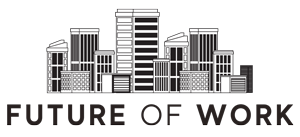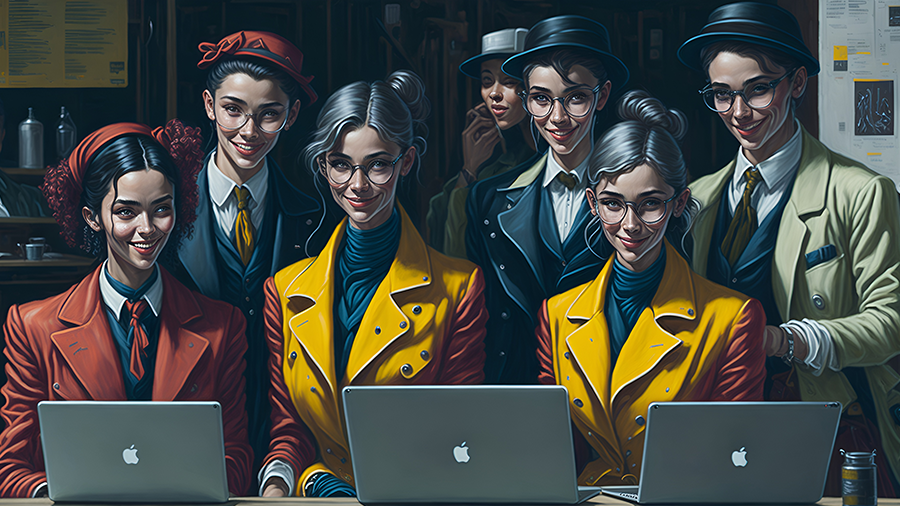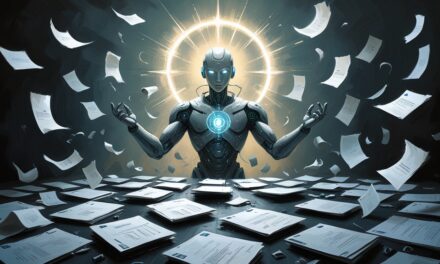By 2025, Gen Z—anyone born in the late 1990s or early 2000s—will account for 27% of the workforce. And as Gen Z brings new expectations and specific demands to the workplace, you can expect the future of work to change drastically over the coming years.
Known as the “first global generation,” Gen Z has grown up in an era when global content and information are more readily available than ever. This is a generation that is well-informed when it comes to technology. They are used to personalised digital experiences and expect the same from their workplace.
Gen Z is also the first generation to face widespread digital learning. Many were at school or university during the COVID-19 pandemic and experienced remote learning. This is influencing their expectations of the workplace, making Gen Z more comfortable with and drawn to hybrid working structures and a fluid work culture. The preference for hybrid, fluid work means that many in Gen Z may not consider roles with rigid schedules and structured expectations.
Historically, salary has been considered the most important factor when deciding on a job; however, research into Gen Z attitudes has shown that they value salary less than every other generation. Given a choice between a dull job with high pay and an interesting job with lower pay, Gen Z is evenly divided. They also prioritise jobs that offer opportunities to expand their skillset, broadening their talents and gaining valuable experience at the same time.
Understanding Gen Z’s workplace expectations
To attract and retain talent, organisations will need to meet Gen Z’s standards without diminishing those of earlier generations. Adopting a holistic technology approach is the way to accommodate an organization’s evolving workforce and the related evolution of its workplace and workloads. Successful employers will prioritise the needs of all employees, factoring in both the work environments and the demands placed on the underlying infrastructure.
With improved collaboration, employees are no longer confined to a single location, so it doesn’t matter where co-workers are situated geographically. Armed with technology that lets employees work from anywhere and with anyone—in real time—organisations can satisfy Gen Z’s preference for a more flexible work life.
Digitalisation is also changing how teams operate, form and adapt. Team hierarchy used to look a lot like company hierarchy, with teams being structured in a way that reflected their company’s org chart. Employees now frequently work on projects outside of their formal roles. Given Gen Z’s preference for continuous upskilling, organisations that provide opportunities to create and to learn will attract and retain more Gen Z talent.
Delivering an outstanding employee experience
To foster a strong hybrid working environment, IT needs to start by partnering with HR. To develop a clear employee experience initiative, IT must fully understand all aspects of the employee experience and the employees’ specific needs.
The ultimate goal is to make it easier for employees to do their jobs. Removing barriers to work will improve productivity. Employees want technology that is simple to use, dependable and intuitive. When there is an interruption, they expect to return to work promptly and with ease.
To minimise employee effort and increase satisfaction, focus on eliminating unnecessary steps, setting expectations, keeping employees informed and streamlining processes. Make sure to consider all touchpoints from both a process and technological standpoint.
For example, organisations need to support the workforce by allowing employees to self-service their own IT needs across locations, devices and channels. A digital enterprise management platform can enable this, giving employees enterprise-wide workflows and coordination for IT and business processes.
The platform can also provide an adaptative user experience that assists the workplace by recognising where the user is, what device is being used and what privileges should be upheld to maintain strong data security standards.
Finally, the same platform can handle workloads to deliver a frictionless employee experience. Harnessing telemetry data from network and infrastructure components—as well as data about user devices, identities and applications—will provide an efficient full stack monitoring and correlation experience that helps ensure employees remain productive.
Transforming innovation, collaboration and operations
By creating a strong employee experience, organisations will reap the benefits of more engaged, productive employees; increased quality of work; enhanced customer relations; and lower absenteeism rates.
Crucially, it will also transform how organisations innovate, collaborate and operate to support business growth. Innovation used to be a top-down process whereby executives developed new ideas based on their larger view of the business and their vision for the future. Now, the democratisation of knowledge and access to technology make it possible for employees across the organisation to provide workable ideas.
With Gen Z looking for interesting work, any opportunities to inspire innovative thinking is sure to satisfy their wishes and help recruit and retain the next generation of talent.
Brent Dorshkind is an enterprise analyst and content manager at ManageEngine. He covers leadership, management, and culture and favors big picture, Infinite Game-style strategies and their application in the IT department and the organization at large. Brent believes today’s IT leaders are among the best qualified candidates for the CEO seat, thanks in part to the acceleration of digital transformation in the workplace. His goal is to expose leaders at every level to ideas that inspire beneficial action for themselves, their companies, and their communities. For more than 30 years, Brent has advocated information technology as a writer, editor, messaging strategist, PR consultant, and content advisor. Before joining ManageEngine, he spent his early years at then-popular trade publications including LAN Technology, LAN Times, and STACKS: The Network Journal. Later, he worked with more than 50 established and emerging IT companies including Adaptec, Bluestone Software, Cadence Design Systems, Citrix Systems, Hewlett-Packard, Informix, Nokia, Oracle, and Sun Microsystems. Brent holds a B.A. in Philosophy from the University of California, Santa Barbara.







